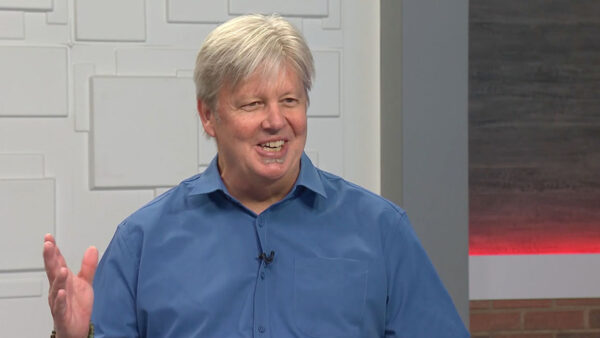A 100 years ago on this date, leaders of the Arizona territories signed their newly drafted constitution. Ruth McGregor, of the Constitutional Convention Event Committee, talks about the history of Arizona’s constitution.
Ted Simons:
A major milestone does a D.A., 100 years ago on this date, leaders of the Arizona territory signed the newly drafted constitution. It was the first step in what they hoped would be a speedy race toward statehood. Is took over a year before Arizona finally became a state. Here to talk about that history and how the constitution is holding up is retired Supreme Court justice, Ruth McGregor. And serves on the Supreme Court's centennial commission. Justice, good to see you again.
Ruth McGregor:
Glad to be here.
Ted Simons:
Give us a background and overview of the history in getting the Arizona territory to a state.
Ruth McGregor:
It was not an easy history for Arizona. Arizona's efforts really started during the civil war and the first -- the first time that Arizona was recognized as a territory was actually by the confederacy. That didn't last long and then Arizona started going through a series of attempts to be recognized as a state. There were a number of roadblocks to that. There was a suspicion that the failure to be recognized was political because the government was Republican and Arizona then was a very democratic state. There were a lot of discussions whether Arizona and New Mexico, which had originally been the same territory and later separated, about whether Arizona, New Mexico, that territory should come in as one state. Which would probably would have been New Mexico. One constitution was adopted and rejected. So Arizona went through a lot of years of trying to get to the point that it could actually be recognized as a state.
Ted Simons:
And now the Organic Act, was that in the civil war days.
Ruth McGregor:
Yes, signed by Abraham Lincoln in 1860.
Ted Simons: And that's set aside as Arizona territory correct? We're trying to become a state and it doesn't seem to be happening. Why did it happen when it did? Talk about the enabling act first.
Ruth McGregor:
One the things that delayed Arizona was that it require that president Taft approve the constitution that Arizona adopted and there was a lot of discussion and disagreement when Arizona's constitutional convention was meeting and prior to that, about whether Arizona would adopt direct democracy provisions. The initiative and referendum and recall process, particularly of judges. And because it had to be approved by president Taft, there was a lot of discussion during the convention as to whether or not including these direct democracy provisions would prevent Arizona from becoming a state.
Ted Simons:
You mentioned the constitutional convention. Who were the delegates? Who were the people we're looking at right now.
Ruth McGregor:
First they were all men. Women were not part of the constitutional convention. There were 52 of the delegates. They came from a number of different areas of life. About a quarter of them were lawyers. A couple were doctors, some business people. Objective two of them had been born in Arizona. Had lived here all their lives. The rest from some place else and six were actually immigrants who had been born in other countries and come to Arizona. It was heavily democratic. 41 of the 52 delegates were democrat and 11 Republicans.
Ted Simons:
So we have this group, I'm guessing -- well, maybe wrong but was there a lot of fussing and fighting at the constitutional convention over what the constitution -- obviously had been drafted first, but was there fussing and fighting going on?
Ruth McGregor:
There was a lot of fussing going on and when the constitution was finally adopted, all the democratic delegates but one signed it and none of -- except one. It centered in a number of areas. One was on the direct democracy provisions, another on the rights of people, of employees and people to recover for damages. That was very much a part of the progressive agenda that was important across the country but especially in state -- coming into the union about this time. And there was a lot of concern, not only about government power but about the power of big business, the mines and railroads in Arizona and how to ensure that employees were treated fairly within the statement. That was an area of a lot of contention.
Ted Simons:
Sounds like labor issues were very much at the forefront here.
Ruth McGregor:
They were very important. One of the things that the man who came Arizona's governor several times over, governor hunt, was -- chaired the convention, I think they called him the president of the convention and he managed to broker a deal. The labor party was fairly big at the time. Bring the labor party in with the Democrats and voted together as I democratic party. But the rights of the workers were important and labor issues were very big during the convention.
Ted Simons:
Was this seen at the time as a relatively progressive constitution?
Ruth McGregor:
Very much so. It was part of the progressive movement amp reflects very much the distrust of the government. Hence, the election of a lot of officers in Arizona not elected offices elsewhere. The election of county attorneys and clerks of the superior court and mine inspector. All of that reflects the real distrust. The government.
Ted Simons:
Did that reflect in itself, the west, a territory becoming a state and not going through the decades that some of the eastern states went through if was that more of you're out there on your own, take care of yourself business?
Ruth McGregor:
It was very much a western business. Looking at the direct democracy, South Dakota was the first state, then to adopt them. Oklahoma and Oklahoma and Washington. The western states with were the ones that initially had an opportunity for people to speak directly as to what the law should be, rather than only through their elected representatives.
Ted Simons:
You mentioned recall of judges being a major factor here.
Ruth McGregor:
Right.
Ted Simons:
In order to get the thing signed, apparently the constitution went one way and as soon as we became a state, we went the other way.
Ruth McGregor:
The story of Arizona, they knew during the constitution convention that president Taft was very opposed to allowing the recall of judges. And there's a lot of debate during the constitutional convention and people say -- one -- one delegate went through this whole long thing, of course, I have a rabbit to make a rabbit pie, let's not worried if I have the onions and potatoes. Using that to leave out the recall of judges knowing that president Taft would not approve. And they put it in. And President Taft did not approve it. He sent it back. They adopted another constitution, removing the recall of judges. President Taft approved it and Arizona became a state on February 14th, 1912 and the next election, the voters put back in the constitution, the provision allowing recall of judges.
Ted Simons:
Even back then we were Arizonans.
Ruth McGregor:
We were.
Ted Simons:
How has the constitution since then -- and I guess starting with the first movement -- over time, how has it changed and evolved with Arizona?
Ruth McGregor:
Well, the basic constitution remains very much in effect. Arizona has as you know, amended the constitution many times and we've had, I think 120 ballot propositions that were either initiative or referendum where the voters directly decided what the law would be. But the basic structure of our constitution really has not changed.
Ted Simons:
And we're looking at it now, and it looks like it's just a piece of type-written paper. Not the grand document you see under glass, is it?
Ruth McGregor:
There were no caligraphers apparently. But it's as valid.
Ted Simons:
When you look at our history and you want people to become more aware of where we were and where we're going, what do you want them to take from this? It's been 100 years, this is what it was. What do you want people to learn, know?
Ruth McGregor:
One of the things that's been important is a that Arizona has used the direct democracy provisions often.
Ruth McGregor:
Our voters have done things where they felt the legislature was not acting as they would want. Within my own area, it was through citizen initiative that we adopted, merit selection of judges, went away from election of judges. The voters spoke in other areas. Medical marijuana, first things first. Some of the things that Arizona's best known for actually came through the popular -- the direct democracy provisions. We've been fairly quick to amend our constitution. It's easier to amend than the federal constitution is. But the voters I think have shown a real interest in the basic constitution. It's very protective of the rights of Arizonans and attempts to cut back on the protections have always met with failure at the ballot box. The voters -- the general notion seems to be much like it was back in 1912.
Ted Simons:
Isn't that something?
Ruth McGregor:
Yeah.
Ted Simons:
Justice, thank you so much for joining us.
Ruth McGregor:
Glad to be here.
Ruth McGregor:Constitutional Convention Event Committee;























